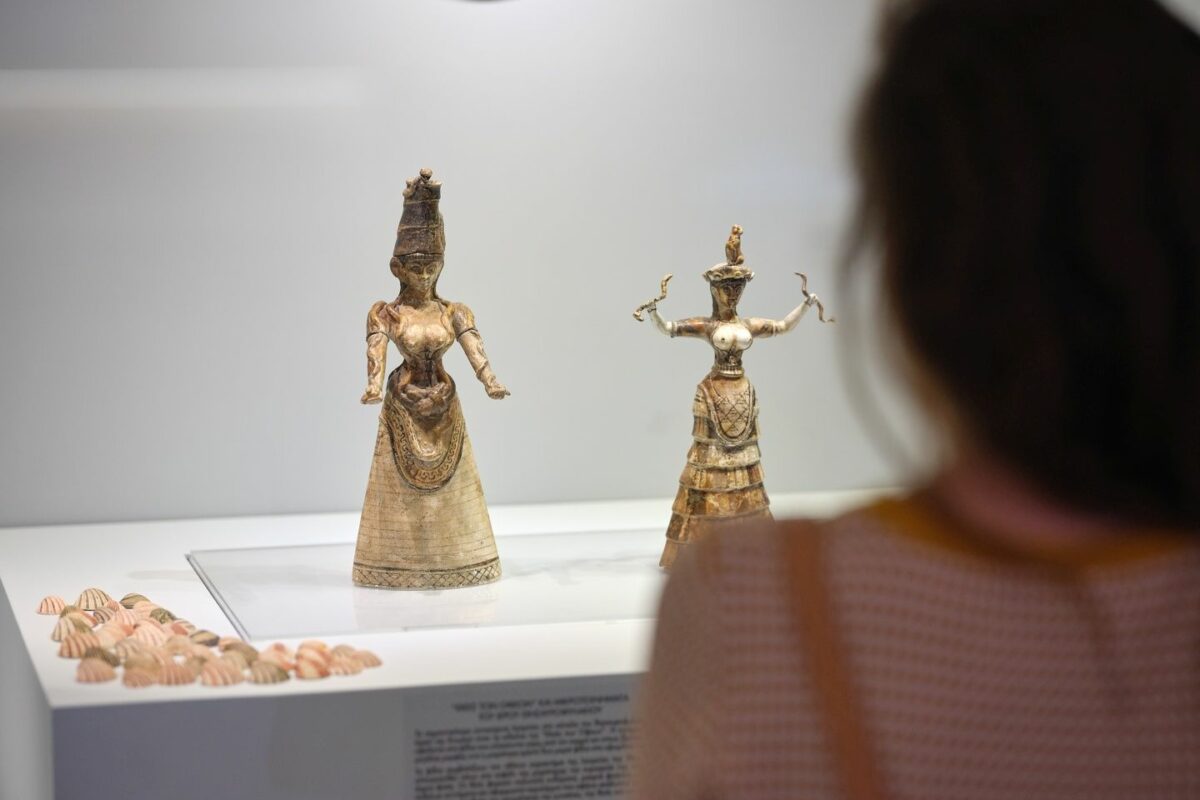
Crete is home to many fascinating artifacts that shed light on ancient civilizations. Among these treasures, the Snake Goddess figurine stands out as a captivating symbol of Minoan culture. Discovered in the early 20th century, this enigmatic artifact continues to intrigue historians, archaeologists, and visitors alike. Here’s a closer look at the Snake Goddess figurine and why it’s a must-see for anyone visiting Crete.
A Glimpse into Minoan Civilization
The Snake Goddess figurine dates back to around 1600 BCE, during the height of the Minoan civilization, which flourished on Crete from approximately 3000 to 1450 BCE. The Minoans are celebrated for their advanced society, impressive architectural achievements, and vibrant art. The discovery of the Snake Goddess provides valuable insight into the religious practices and daily life of this sophisticated culture.
The Discovery
The Snake Goddess figurine was unearthed in 1903 by British archaeologist Sir Arthur Evans during his excavations at the Palace of Knossos, one of the most significant Minoan archaeological sites. This palace, believed to be the ceremonial and political center of Minoan Crete, has yielded numerous artifacts, but few are as iconic or mysterious as the Snake Goddess.
The Figurine: Symbolism and Significance
The Snake Goddess figurine, standing about 13 inches tall, is made of faience, a glazed ceramic material. She is depicted holding a snake in each hand, with another snake coiled around her head. Her attire includes a tiered skirt and an open-front bodice, revealing her breasts, which is typical of Minoan fashion and indicative of fertility and femininity.
Key Interpretations:
- Fertility and Mother Goddess: Many scholars believe that the Snake Goddess represents a fertility deity or Mother Goddess, a central figure in Minoan religion. The snakes she holds are often associated with rebirth, regeneration, and the underworld, further emphasizing her connection to life and death cycles.
- Priestess or Divine Protector: Another interpretation suggests that the figurine depicts a high-ranking priestess or a divine protector, symbolizing the Minoans’ reverence for nature and the spiritual world.
The Legacy of the Snake Goddess
The Snake Goddess figurine has become a symbol of Minoan art and culture, capturing the imagination of those who study ancient civilizations. Her image is frequently used in modern interpretations of Minoan life and serves as a reminder of the sophisticated artistry and religious practices of the Minoans.
Visiting the Heraklion Archaeological Museum
To see the Snake Goddess figurine in person, a visit to the Heraklion Archaeological Museum is essential. This museum, one of the most important in Greece, houses an extensive collection of Minoan artifacts, including the Snake Goddess. Viewing this iconic figurine offers a direct connection to Crete’s ancient past and the intriguing world of the Minoans.
Plan Your Cultural Journey
Staying at our hotel provides the perfect base for exploring Crete’s rich archaeological heritage. Immerse yourself in the history of the island, visit the Palace of Knossos, and marvel at the treasures housed in the Heraklion Archaeological Museum. Book your stay with us and embark on a journey through time, discovering the mysteries of the Snake Goddess and the captivating legacy of Minoan Crete.





